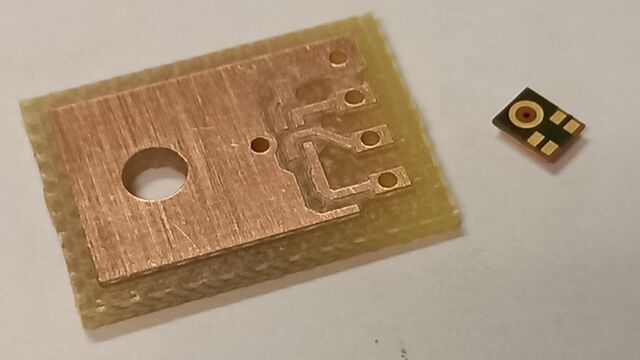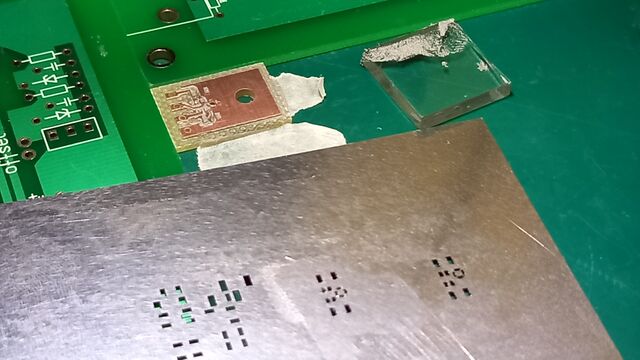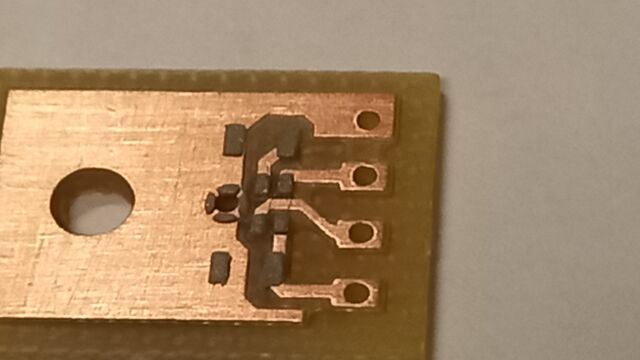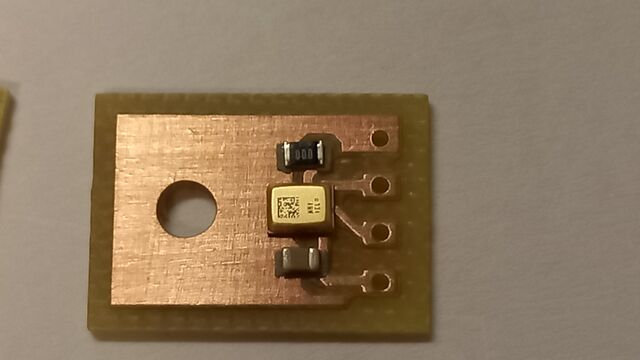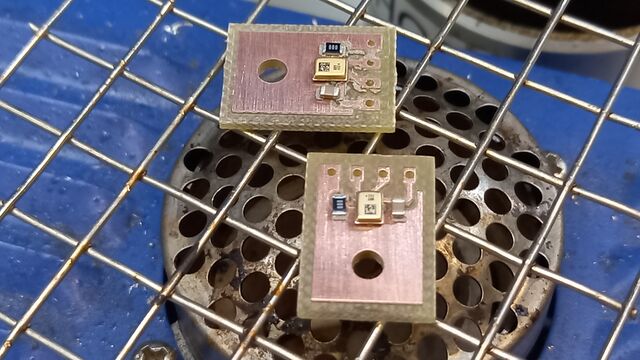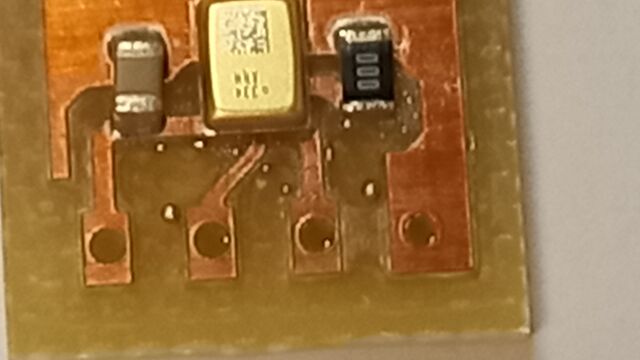Soldering small parts
This is a short image sequence on how very small parts are soldered to a circuit board, with the example of the digital microphone.
Starting components
The microphone sensor on the right, with a bottom hole for sound entering, and five concact electrodes. On the left side, the prototype circuit board is shown.
Printing solder paste
The circuit board is fixed, and a stencil mask, a 125μm thick steel sheet with openings where solder paste has to go is located over the circuit board. Then, solder paste is squeezed through the stenicl mask.
Blobs of solder paste, a mixture of tin/silver grains, and an organic flux resin and binder, are sitting at the contact positions for the microphine and other components.
Component placement
The microphone, and two other components (a bypass capacitor and a 0-Ohm resistor are placed into the solder paste.
Reflowprocess
The cicuit boards are heated up to 250-300 Celsius to melt the solder, and make good electrical connections.
The components are drawn into place by the surface tension of the molten solder, and form stable mechanical and electrical connections.
A standard connector with a pin spacing of 2.54mm (0.1inches) is soldered to the board for easy connection to a digital receiving device.
